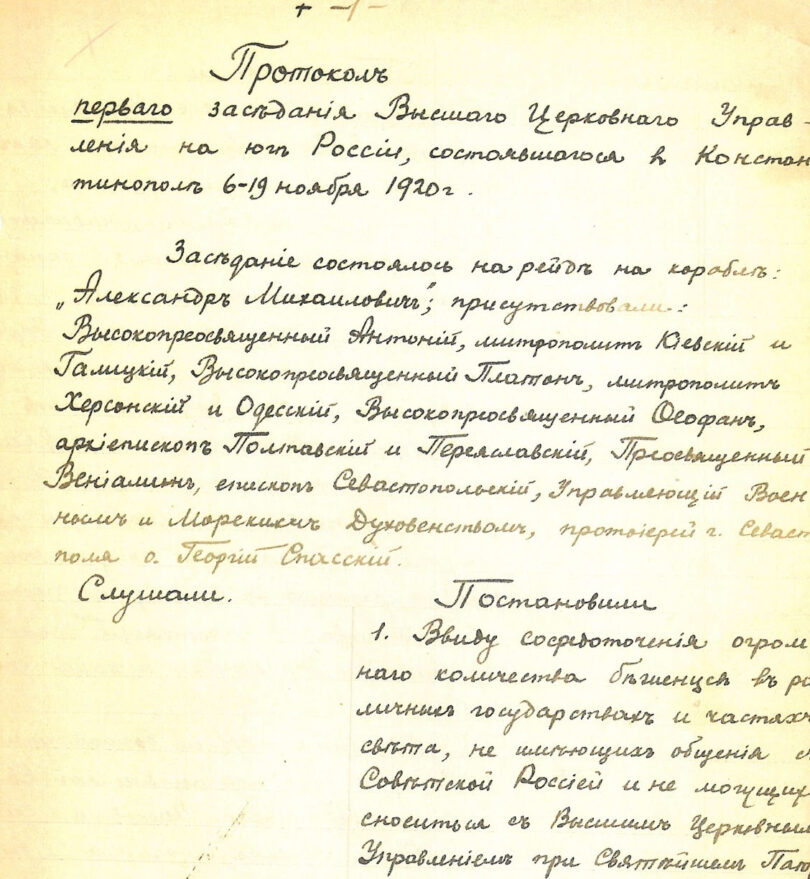The final transport ships with the Russian evacuees arrived at Constantinople from Crimea on this day in 1920.
By November 19, 1920, over 125 ships of the Russian and foreign fleets, overcrowded with Russian refugees and numbering about 150,000 people, had arrived at Constantinople and concentrated on the Bosporus under the leadership of the Commander-in-Chief of the Russian Army, General Peter N. Wrangel. From November 13, 1918, until October 4, 1923, the Dardanelles were controlled by the French and British military.
The Ottoman, Russian and Austro-Hungarian Empires collapsed because of World War I. The period of history began by Emperor St. Constantine the Great, with the Edict of Milan in 313, had ended. The emerging political realities of Bolshevism, fascism, national-socialism, imperialism, and aggressive capitalism were moving the world to the next global war.
The people on these ships did not think about the greatness of the moment. They were dehydrated. Because of a quarantine, the Entente troops could not let them disembark. Sneaky vendors approached the vessels on skiffs, trading water for wedding bands and other valuables. It became a commonplace in the memoirs of those who survived the evacuation to the former Ottoman Empire to blame the British and French for being stingy in their treatment of Russian evacuees. However, I wonder if both powers could realistically have done more than what they did.
On the same day of November 19, 1920, five members of the Supreme Ecclesiastical Authority in the South of Russia (SEASR), Metropolitan Antonii (Khrapovitskii) of Kiev and Galich, Metropolitan Platon (Rozhdestvenski) of Kherson and Odessa, Archbishop Theophan (Bystrov) of Poltava and Pereiaslavl’ and Bishop Veniamin (Fedchenkov) of Sevastopol (he was also the chief of Russian Army military clergy), held an official meeting in their capacity as SEASR members. It is important to remember that several of the SEASR members, like Bishop Nikodim (Krotkov) of Chyhyryn, did not leave Russa.
From the minutes of that first meeting on the vessel, it follows that the Russian refugee bishops, continuing to use the abbreviation SEASR, decided to extend its authority to minister to the ranks of the White Army and to all refugees who could not be looked after by the Church in Soviet Russia, based on the recommendation of the leader of White Army, General Peter N. Wrangel, through Bishop Veniamin. The abbreviation SEASR was used in the minutes until December 12, 1920, after which it became the Supreme Ecclesiastical Authority. From February 3, 1921, it was referred to as the Supreme Ecclesiastical Authority Abroad. Prior to that meeting on November 19, 1920, in the first days after arriving in Constantinople, Metropolitan Antonii had believed that the Russian refugees should join the local Orthodox Churches. General Wrangel wanted to preserve the military network to continue the anti-Bolshevik struggle, and thus the ROCOR became the global church for Russian political refugees.











